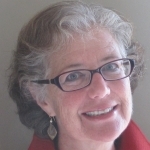 (Host)
(Host)
Given a free choice to move anywhere, most people would choose warm,
sunny climates. Commentator and former New York Times reporter, Martha
Molnar, is a public relations and freelance writer who moved to Vermont
precisely for its cold, snowy winters – only to be disappointed.
(Molnar)
I hate it when people say, oh so cheerfully, "At least it’s not
snowing!" Sure, no snow is wonderful when the world is filled with the
colors of spring, or summer, or fall. But what’s so great about no snow
in winter?
My Husband and I moved to Vermont in large part for
its snowy winters. We moved from 200 miles south where winters were
exactly like this winter has mostly been here. Gray trees, gray air,
gray clouds. Sodden earth, dripping trees.
We craved snow. Snow
falling, snow drifting, snow crystals filling icy, sunny air. We wanted
to ski across frozen lakes and snowshoe in powdery woods. We were
thrilled to find a double slope for sledding right on our property. And
now, after one good and two ho-hum winters, we get this one. Some parts
of the state did get snow in early March, but around here, we’ve been
deep into mud season for weeks.
My whining, of course, pales in comparison with the harsh economic impact suffered by businesses that depend on snow.
I
haven’t lived here long enough to remember the strings of 30 below days
that old-timers say were regular events. Nor the rare so-called "green"
winters. But this winter has felt oddly menacing. It may be a normal
aberration. But as the second warmest winter on record, it’s a reminder
of the changes that even newcomers like us have noticed. Nurseries
selling plants for a zone warmer than what used to be considered safe.
The still fresh memory of my eggplants and tomatoes ripening through mid
October. Maple sugaring buckets out by late February, starting and
ending the season earlier.
At a recent Science Pub gathering in
Castleton, climate scientist Alan Betts confirmed these personal
observations with scientific indicators such as freeze dates, the length
of the growing season, even the first leaf of lilacs, a traditional
indicator of early spring. All show a pattern of a warming climate in
Vermont during the past 50 years. I began to wonder if perhaps we should
have moved further north, maybe a lot further, to say, Alaska ?
So
I had about given up, and was actually beginning to look forward to mud
season, when along comes a week of frigid nights and dry, cold days.
One morning, slivers of distant lakes glimmer through the kitchen
window. Frozen, I realize, and free of snow!
We spend half the
morning digging out our rusty skates. I barely keep from flooring the
gas pedal on the drive to our favorite lake. We check that the ice is
safe. Then, after a few awkward pushes we’re skimming, nearly in flight.
Emboldened by speed, by the brilliant shafts of sunlight on the ice, by
a sense of weightlessness and vertigo, we circle and crisscross the
lake until we collapse once again on the shore.
This isn’t
exactly the winter we expected. But for me it’s a silver lining in a
mostly snowless winter. And once again, we are happy to be here.